Chasing Auroras- Part 2
"Look! Up there!"
"Wow! It looks so red. Oh my God!"
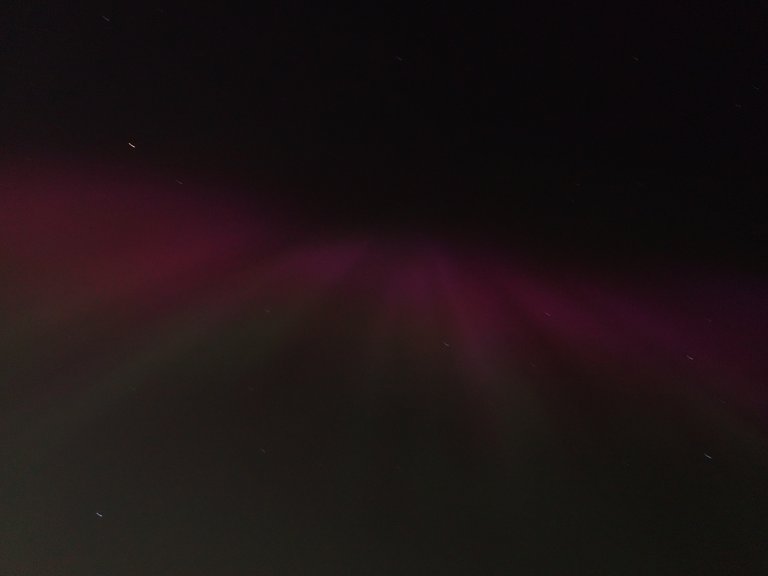 Looking straight up.
Looking straight up."I see green too. Nice! Look at the lines, so straight!"
"That's amazing! It's like it's falling on top of us. It's probably a visual illusion, but it looks like it's coming down towards us. If you look over there, yes, look! Woe..."
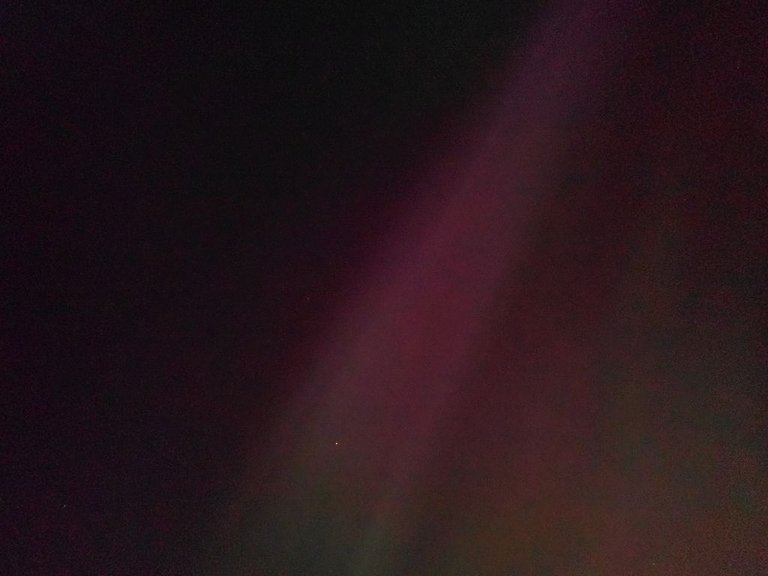
Viewing towards the horizon. Notice the star near the bottom shining behind the rays. It's nicely in focus given the tricky light conditions.
The colours seemed to appear out of nowhere, as if suddenly reality had transformed on a mass scale. It was exhilarating and disconcerting at the same time. I remember going on a hike a few years ago and coming across a large raging river coursing through the forest in a torrent that smashed against the rocks with tremendous force. The raw and unforgiving power of nature was in full display. It didn't care who you were- man or woman, good or bad, rich or poor- the flow would continue incessantly along its path with or without you. At least, at that moment, I had the choice to get closer to that river or move away from it.
The processes that produce the northern lights work on a staggering planetary scale. There's no moving out of the way from them. At least not yet. When a geomagnetic storm hits, it's going to hit whether you're for or against geomagnetic storms.
In part 1, I documented the sights with my Pixel 7 as I made my way to a park on the outskirts of the city, where the light was not as bright as in the downtown core. Along with a few others, I stood in the middle of the park waiting for any signs of the northern lights. The sky was clear with the moon in waxing crescent. Strangely, there was a bright halo around the part of the moon that should've been in darkness, as can be seen in the image below taken with an Olympus tough camera using a teleconverter lens.
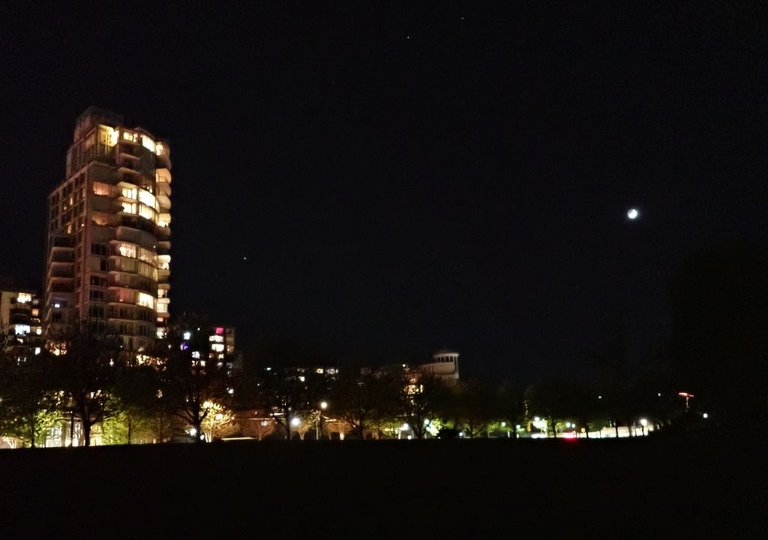
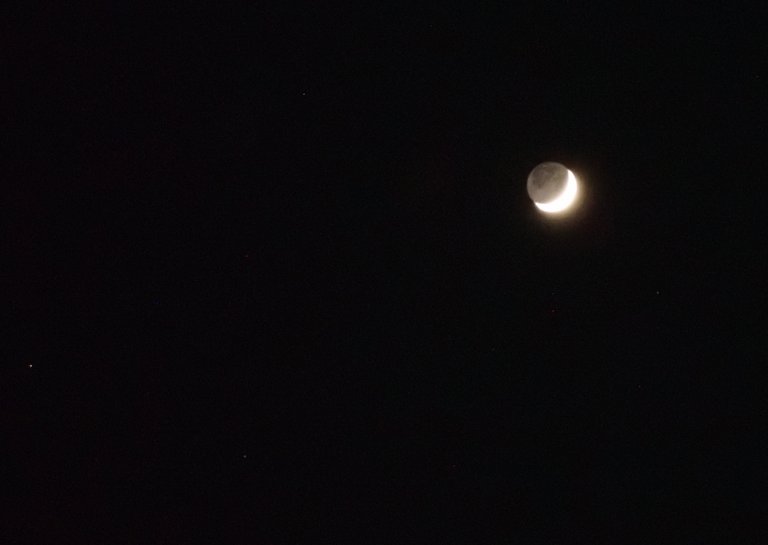
There was also a thin hazy band on the upper atmosphere that seemed strange because it did not move but curved precisely around the sky. I suspected it might have something to do with the auroras, but I wasn't sure given that there were no clear visible signs of the fabled lights when I first arrived there.
Darkness deepened as the sun set below the horizon and the sky turned from blue to dark navy. Little by little, the night turned around, as the Pink Floyd song went. The hazy band that I had noticed earlier had become more pronounced and gained a subtle red hue. I could see that it was no ordinary cloud because it seemed to have straight sharp edges defining some kind of structure.
Then as I scanned the skies, I saw a strange glow suddenly appear right above me, and as if sprayed like a fine mist, the aurora began to pour all over the sky.
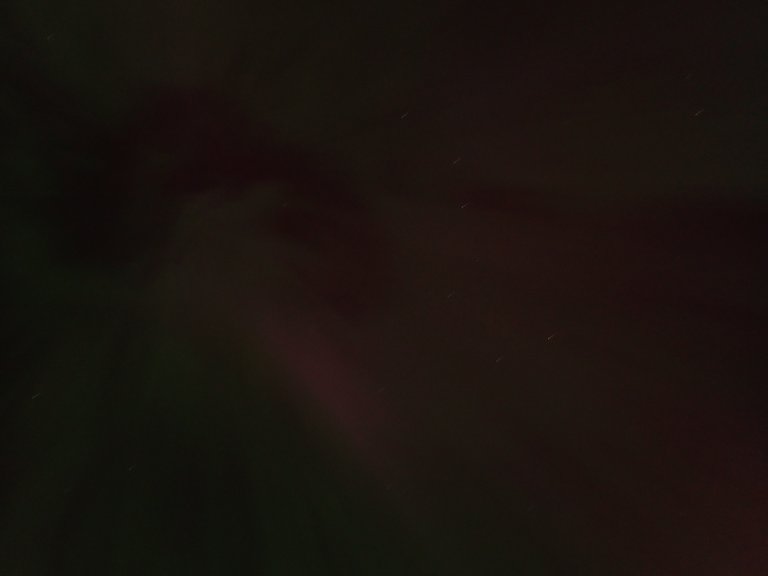

Straight up view. The lines appear to radiate outwards from a common center that is shaped like a blob.
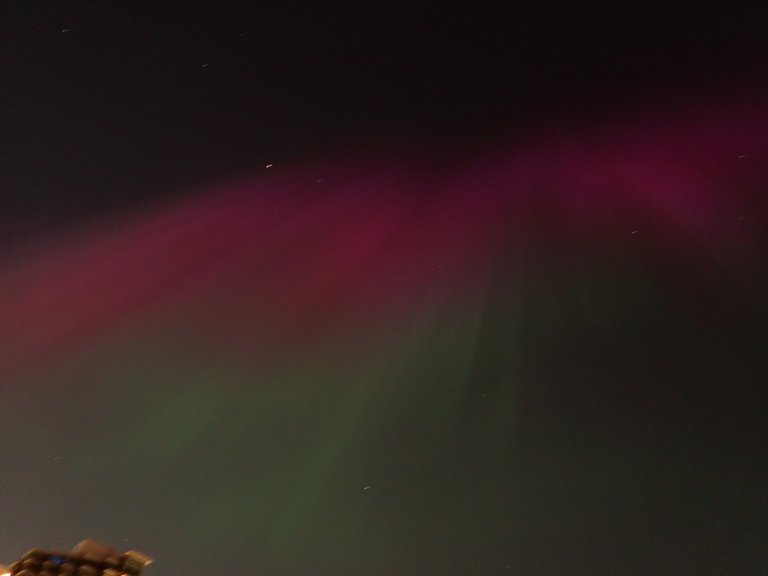
I went into action and began to take pictures of the lights using different settings. The colours were brighter and more clearly discernable in the camera's LCD screen than with the naked eyes alone. I had decided to bring my light tripod with me because I didn't want to log around the heavier one. I think this turned out to be a mistake because the heavier one provides more stabilization than the lighter one, eliminating minor movements that may lead to image aberrations. The exact source of these aberrations remains unknown to me, but things like manually handling the camera, internal mechanisms such as image stabilization, software parameters, and even ground movement could be a source of error given the sensitivity of capturing light in near total darkness.
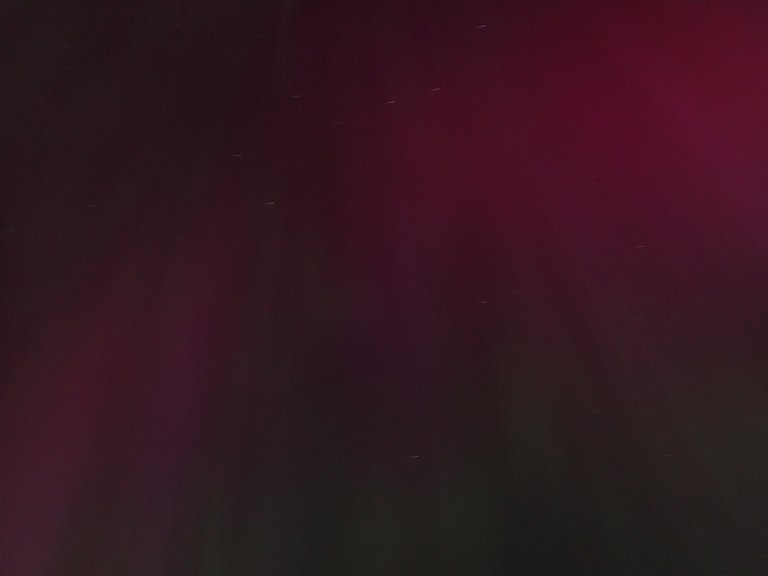
This view is nearly straight up, facing east. The rays seem to fan out near the horizon
I played around with different settings, but it was clear that long exposure was necessary to capture the vibrant colours. Unfortunately, in spite of using a tripod, many of the images showed aberrations. I kept on clicking. Another minor mistake was turning off the camera's image preview function. This meant that I couldn't quickly review the image after I took it unless I started poking around with the buttons. I should have brought a headlamp as well because it was difficult setting stuff up in darkness. I did bring a headlamp the following night, and it made a huge difference in how quick I set up, but sadly no auroras showed up that night. For the moment, however, I was thoroughly enjoying the light show in the sky.
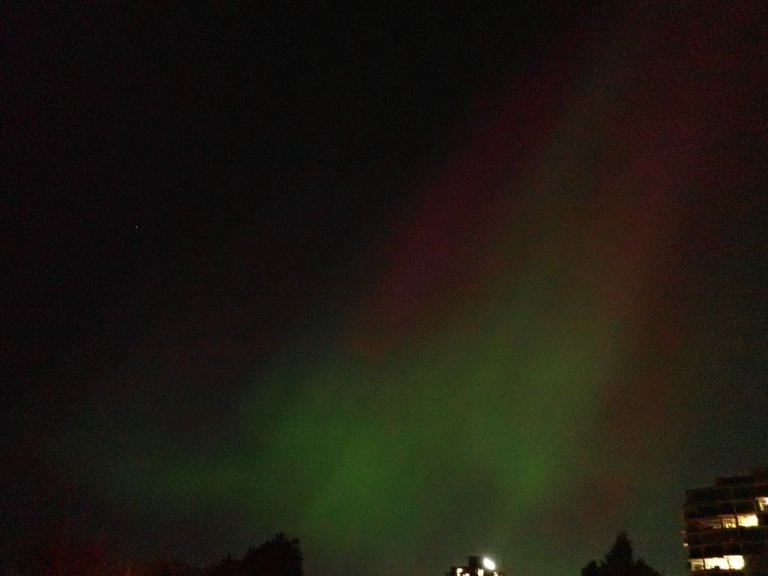
So much green!
I realized that the lights do seem more impressive when they are photographed in context with foreground objects such as buildings and trees. So, instead of just isolating the auroras, I tried to captured buildings on the foreground against the backdrop of the northern lights.
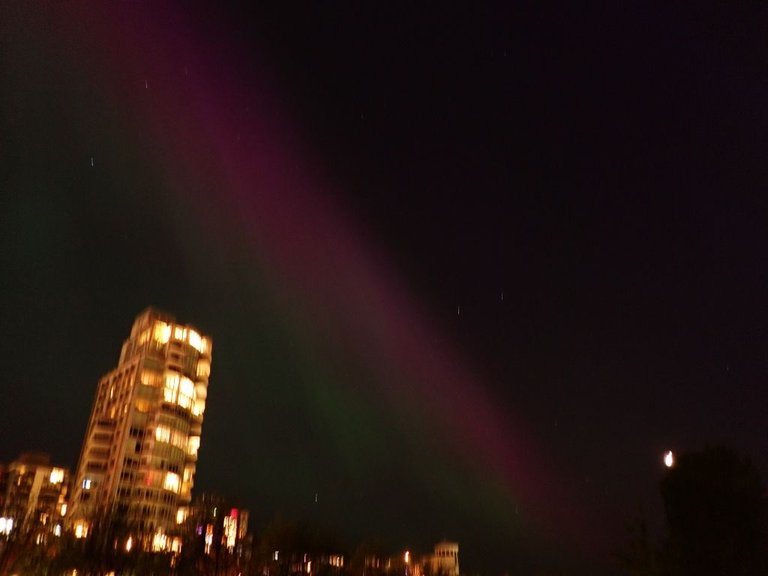
This shot is not in focus, but oh just look at that solar blast! And that moon about to hide behind the tree. So wow
As mentioned, standing beside a raging river puts things into perspective on a vast geological scale. The auroras took things to a whole new level. Now, I was experiencing the raw processes of nature on a planetary scale. A truly cosmic scale, as new agey as it may sound. The colours weren't just aesthetically pleasing, they belied a chemical reaction between solar particles and those present in the atmosphere (oxygen, nitrogen, etc) that showed us something about the underlying mechanics of the planet.
Most of impressive were the auroral rays, which form when charged sun particles follow the magnetic lines towards lower altitudes. It's one thing to look at an illustration or video demonstration of Earth's magnetic fields, but it's quite another to "see it" all around you, enveloping you in its curved oval cocoon. Far out!
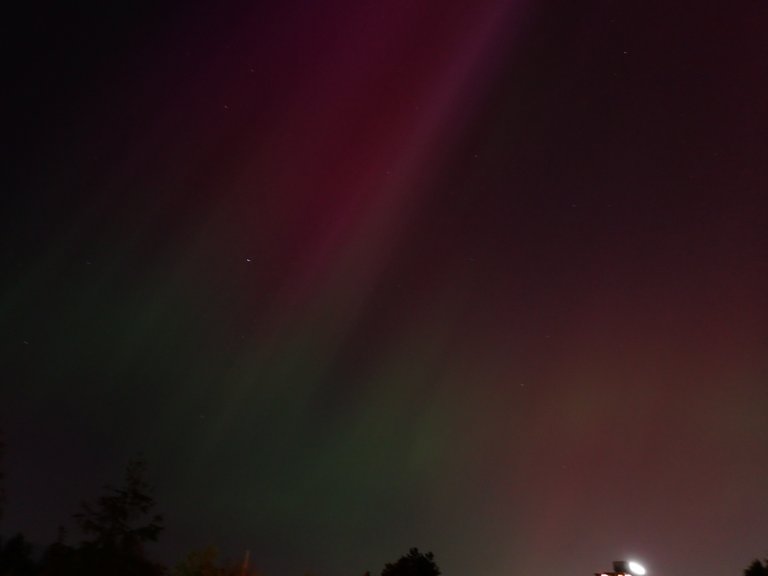
Nice and crisp
I settled into a rhythm with the camera and tripod, directing it towards the ever shifting structures all around. It was also fascinating seeing how the lights did not just follow a straight path but curved and bent sinuously, a phenomenon only visible right overhead. It seemed to me as if the magnetic field lines were bending in that area creating a lava lamp effect.
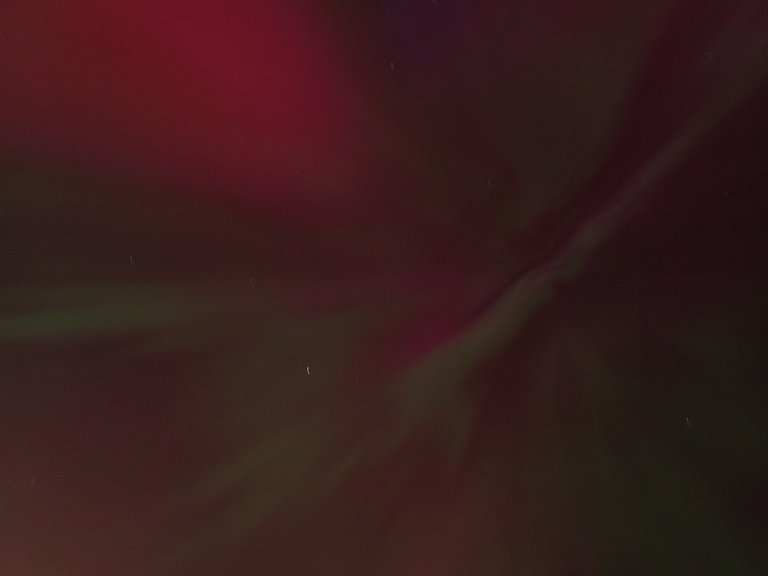
Looking straight up, the pattern in the center bends and flows
The auroras grew in intensity with its shimmering shape-shifting patterns. If I had been on the ball, I would've learned to make a time-lapse movie. The closest that I came to capturing the variations in light was with the following set of images that were taken from the same angle, so the changes in colours and shape of the auroras are visible.
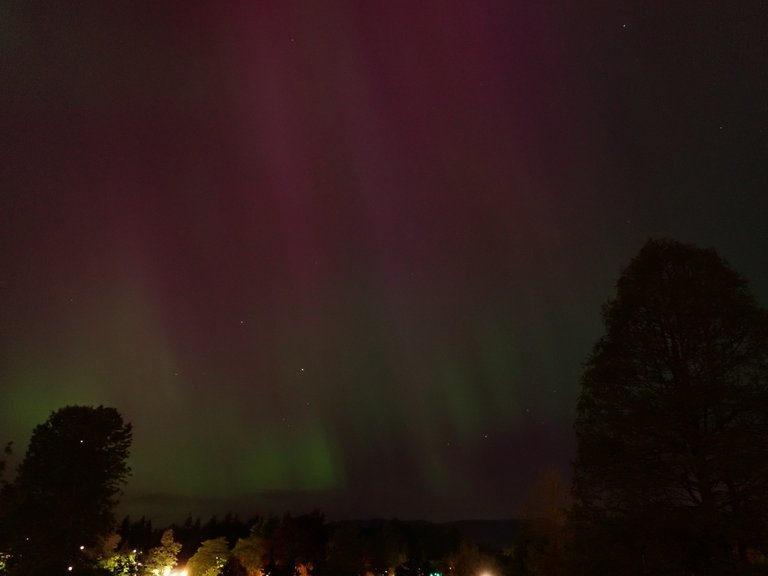
If you're using PeakD, you can click on this image and cycle quickly through the five images in this set using the left-right arrow keys to see the shimmering pattern changing more clearly. It'll make you wonder what it all means.
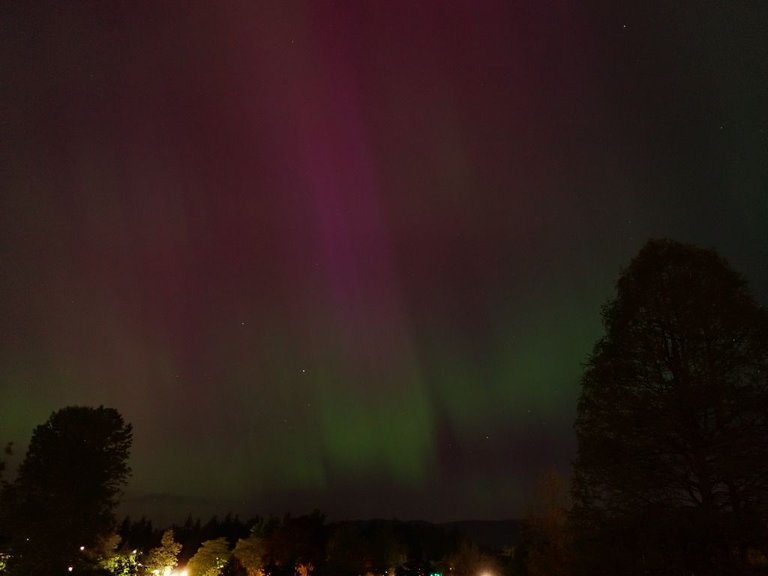
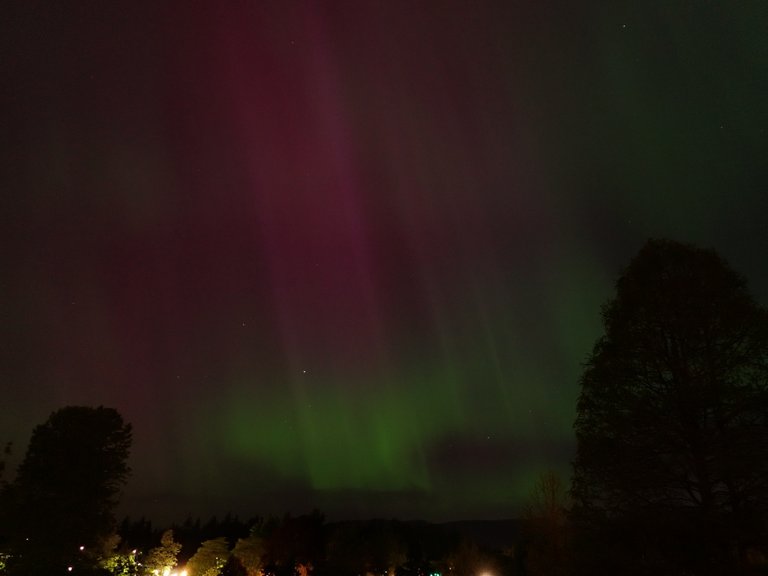

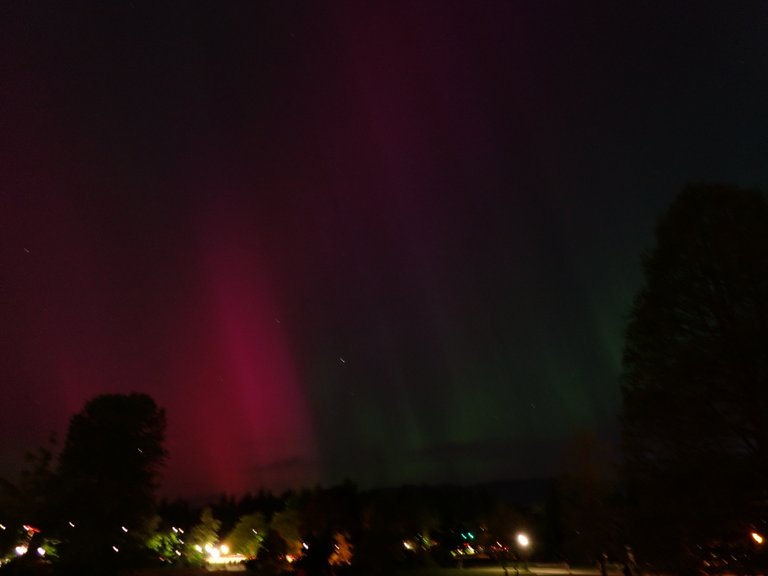
Beautiful red!
What a memorable night it was. The show was still ongoing by the time I left after midnight. Downtown was filled with bright lights, and the auroras could not be seen. There were so many people out and about, and I wondered if they were even aware of the grand light show in the sky.
As I neared home, an Indian lady came out of a hotel and called out to me.
"Where can see...light?" she said in broken English.
"You mean the lights in the sky?" I said a bit mystified and amused. Why would she ask me? Do I look like an aurora chaser?
"Yes."
"You have to go somewhere dark like a park," I told her.
"Maybe on roof!" she said laughing.
"Yes, that could be a good spot," I said also laughing then waved and took my leave.
Out of all people, of all places in the world, at any instant time, she had picked me in this place and moment in time.
It's truly a wonderful weird world.
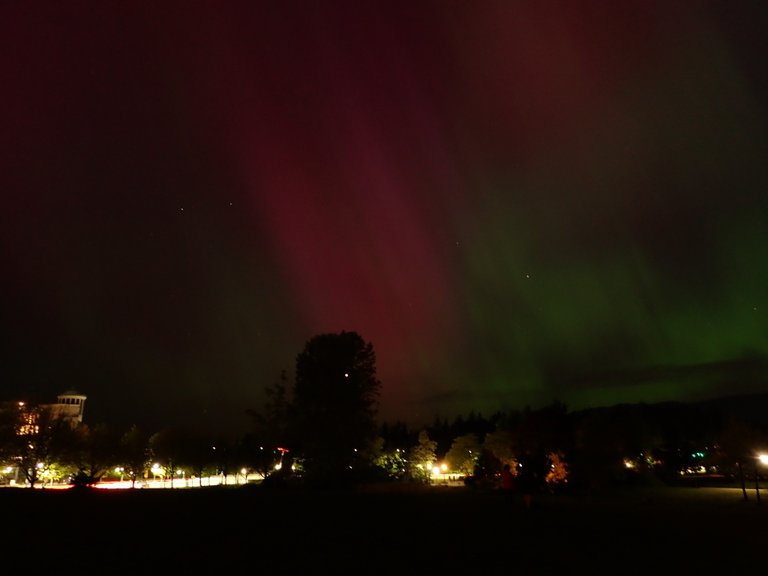
Images by @litguru
Congratulations @litguru! You have completed the following achievement on the Hive blockchain And have been rewarded with New badge(s)
Your next target is to reach 20000 upvotes.
You can view your badges on your board and compare yourself to others in the Ranking
If you no longer want to receive notifications, reply to this comment with the word
STOPI like that. That's an impressive photo nice find. Did you locate yourself to that location, or stumble on it?
Thank you! I had been to this park before during the daytime, so I decided to try it. I got lucky 👍
You did a good. I like his your experimenting with different lenses for the effect. Nice !LUV
Thank you!
It really is a wonderful and weird world. I had been trying to catch a glimpse of the aurora borealis for 20 years before this recent incident! And yes, it was much easier to see through the lens of the camera (or in my case, my cell phone). It was a truly spectacular event!
That's fantastic that you were able to catch this once in a lifetime event. The beauty and grandeur of nature was in full display. I hope you were able to find a nice dark spot from where to view them. 🌌
What beautiful colours! The sky was a party, you were able to make very nice catches, I love it!😍
Thank you. I was in the right place at the right time. I was just far away enough from the city lights to catch them.
Light pollution often prevents us from seeing these wonders. Thank goodness you were able to capture those images!
It was a lot of fun.✨